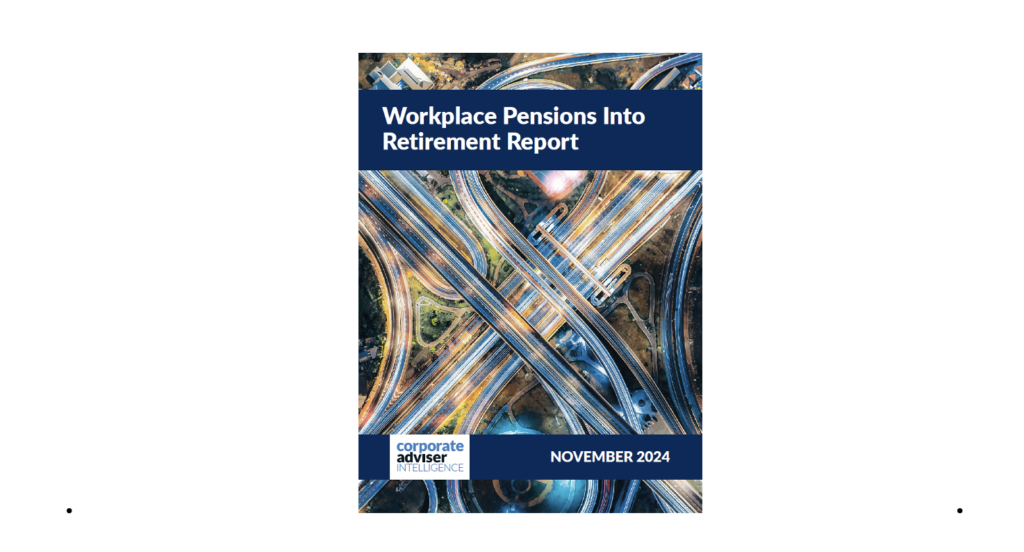An 11 percentage point difference exists in the returns of master trust post-retirement investment strategies, with equity exposure for savers one day after state pension age (SPA) ranging from 90 per cent to single digits.
That is one of the key findings of Corporate Adviser’s recent Workplace Pensions Into Retirement Report 2024.
Aviva’s master trust achieved the highest return, at 17.23 per cent, boosted by its 87 per cent overseas equities exposure, followed by Aon at 13.7 per cent. That compares to The Lewis Workplace Pension Trust’s 5.63 per cent return, which reflects that master trust’s cash preservation approach designed to meet the needs of the very high proportion of members taking typically smaller pots as cash. This story has been corrected following confirmation from Smart Pension that its post-retirement strategy returned 11.4 per cent, and not 0.9 per cent as it originally stated in error.
The range of strategies of master trusts at the point five years on from state pension age is equally large – as is the performance outcomes, with a 16 per cent return differential between the highest and lowest returns. Fidelity delivered 17 per cent in the year to 30.6.2024, boosted by its 75.2 per cent equity exposure. Again Smart Pension’s more cautious approach delivered a return of less than 1 per cent.
The report examines a wide range of data points across the workplace pensions sector, including year-on-year performance for investment pathways of FCA-regulated providers, decumulation functionality and attitudes to collective DC (CDC).
The report finds decumulation-only CDC arrangements are on the roadmap of more than a third of providers, with eight – including Nest and life insurer Standard Life – saying they will probably offer one in the next five years.
It also found two thirds of advisers do not support a solution that allows DC assets to be transferred into DB benefits protected by the PPF.
Taking the entire pot as cash remains the principal means of drawing benefits at retirement, with more than 80 per cent of savers doing so at Now: Pensions, TPT Retirement Solutions, NatWest Cushon, Nest, The People’s Pension and Legal & General.
Mercer has the highest proportion of retiring members moving into its income drawdown product, with 42.1 per cent of members doing so, followed by Fidelity (41 per cent), LifeSight (40 per cent) and Standard Life (36 per cent).
The report finds that two thirds of providers offer access to an annuity broking service and more than half off access to financial advice.
Withdrawal functionality offered by providers continues to improve, but a third of providers cannot offer drip-feed drawdown.
Performance of default funds one day before retirement varies by more than 5 per cent, with some providers offering a solution more tailored to drawdown, while others targeting members taking cash. The difference between the highest and lowest performance of providers is narrowing, down from 13.3 per cent four years ago to 5.2 per cent in the year to 30.6.23.
The average return for investment pathway 1 (stay invested) stood at 13.88 per cent in the year to 30.6.23. Fidelity’s investment pathway 1 saw the highest return, at 33.1 per cent.
Investment pathway 2 returns (buy an annuity in five years) averaged 6.68 per cent, with the highest 12-month return being Scottish Widows at 9.78 per cent.
Investment pathway 3 (plan to take long term income in next five years) returns averaged 9.16 per cent in the year to 30.6.24, with the highest return delivered by Scottish Widows, at 11.2 per cent.
Despite its common objective of preserving capital, approaches to investment pathway 4 (take all the money in the next five years) vary widely. Aegon, Aon, Fidelity and Hargreaves Lansdown all have 100 per cent exposure to cash or money market strategies, and delivered returns net of charges of between 5.32 per cent and 3.1 per
cent. Legal & General’s 100 per cent corporate bond allocation saw the highest return of 10.42 per cent. The average return was 6.78 per cent.
Corporate Adviser Intelligence head of research John Greenwood says: “This report is designed to inform debate around the development of propositions that will support members through the complex journey of transitioning to retirement, and the options open to occupational schemes as they embrace their new obligations to offer a retirement income proposition, as outlined in the King’s Speech.
“Innovation is gathering pace, with decumulation-only collective DC (CDC) in the thinking of more than a third of multi-employer DC providers, and reports of growing appetite for some larger employers for an arrangement akin to the Royal Mail scheme.
“Basic functionality is improving, but is still widely varied between providers operating in the occupational market, whereas FCA regulated providers offer most if not all options for withdrawing money efficiently.
“There is still a long way to go before all retiring DC savers get access to an optimal exit strategy, but it is clear that the industry is now really starting to engage with the huge challenges that non-advised decumulation present.”
